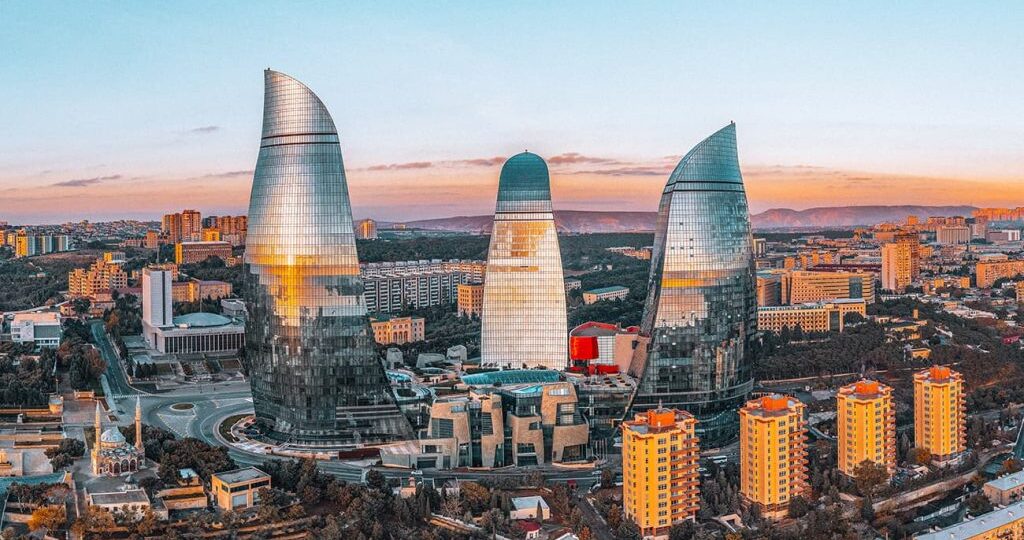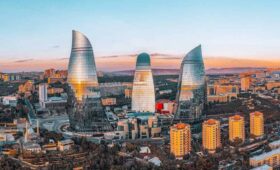Azerbaijan language is also the mother tongue of more than 30 million Azerbaijanis living in the Islamic Republic of Iran. Several million Azerbaijanis live in Russia, the United States, Turkey, and Western Europe. Despite living in different countries for several centuries, Azerbaijanis still understand each other freely, regardless of the country in which they live. Thus, there are more than 50 million Azerbaijani-speaking people in the world today.
According to the genealogical classification, Azerbaijan language is one of the Turkic languages, belongs to the Oghuz group of this language family, and together with its closest relatives Turkic, Turkmen, and Gagauz languages form the south-western group of Turkic languages according to the territorial principle.
From the point of view of traditional-morphological or typological classification, the Azerbaijani language belongs to the group of agglutinative * languages. Like all languages in this group, Azerbaijani, unlike inflectional languages, has its own lexical and grammatical meanings; grammatical meanings and grammatical connections are always expressed through monosemantic suffixes following the root and stem of the word.
The Turks, who formed the ethnic basis of the Azerbaijani people, began to appear in the territory of present-day Azerbaijan before our era, and from the beginning of the first millennium, along with numerous tribes of other origins, became ancient inhabitants of this land. The formation of the Azerbaijan language of Turkish origin and the people who speak that language, in other words, the transformation of this language into a common means of communication, was a long process that lasted for several centuries. As the number of Turkic tribes in the ethnic composition of the population, as well as economic, political, and cultural influence, increased, the scope of language expanded, and thus various ethnic groups united to form a nation with a common cultural, spiritual and religious unity.
Azerbaijan language is one of the ancient literary languages that has undergone great development. If the language of the “Kitabi-Dada Gorgud” epics is accepted as an oral form of our literary language, the language that currently serves as a means of communication to the people can be considered more than 1300 years old. The history of the written literary language of Azerbaijan, according to the available materials, dates back to the XIII century.
The Azerbaijani literary language covers two major periods in its nearly 800 years of development. The first period, called the old period, covers the period from the 13th century to the 18th century, and the second period, which can be called the new period, covers the period from the 18th century to the present day.
The area served by the first period of the Azerbaijani literary language differs in its size. This language, which was the palace and army language of the Azerbaijani states of that time, such as Jalayirs, Garagoyunlus, Aghgoyunlus, Safavids, served as a literary language in all of Central Asia. The Azerbaijani literary language of this period differs from the Azerbaijani language of the new period not only by its extralinguistic features but also by its linguistic peculiarities.
The first of the lexical differences is that in the first period there were many Arabic and Persian words in the Azerbaijani language. The language styles of that time, especially the leading poetic genres and means, caused a large influx of borrowed words into our literary language. In the second period, the emergence of the realist school of poetry, the literary method of realism as a creative method, and the formation of the leading creative method caused the abandonment of the literary language of borrowed words that could not pass into the main vocabulary of our language.
Secondly, a number of words of the old Azerbaijani literary language common to the Ottoman language (shimdi, shoyla, shu, kendi, etc.) had completely lost their function in the new period. This was the result of the complete end of the phenomenon of differentiation in the field of Turkish literary languages.
The differences between the periods are also strong at the phonetic level. Thus, the new period is characterized by the stabilization of the Azerbaijani literary language, as well as the structure of the phoneme. The consonant balance o // a vowel, h // q // x, which is characteristic of the first period, already results in the victory of the first (o and h).
A similar situation exists in the field of grammar. The equivalence of the first-period pronouns -yi, -yı, -yu, -yü // – ni, -ni, -nu, -nü disappears in the second period. The future tense suffix of the verb -iser gives its function to the suffix -acaq // – acek.
The structure of word combinations in the old Azerbaijani language was mostly in the syntactic model of Arabic and Persian languages: fasli-gul (flower season), tarki-tariqi-eshq (abandonment of the way of love (path)), inki-ahli-kamal (including the people of kamal)… That is the descriptive word is developed after the designated word. The second period is quite the opposite in the Azerbaijani language: the definite article is used before and always before the definite article.
As another syntactic difference, in the first period, the subordinate compound sentences in which the branch sentence is located inside the main sentence were used more (as in who, bivafa saw in the world, bivafa saw), in the new period more verb adjectives were used instead of this type.




